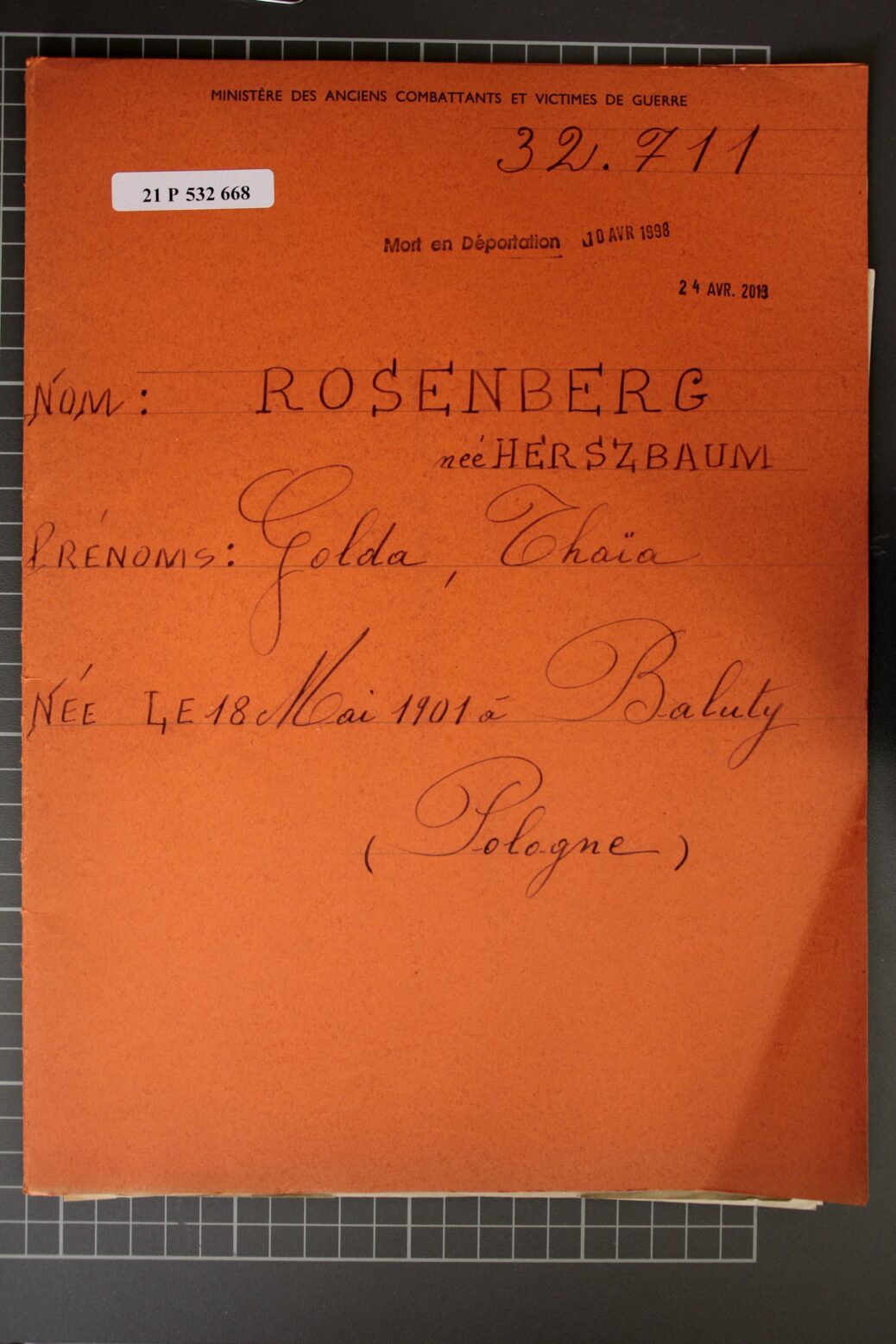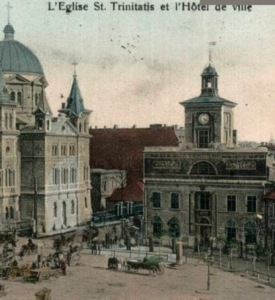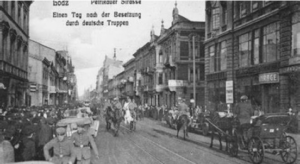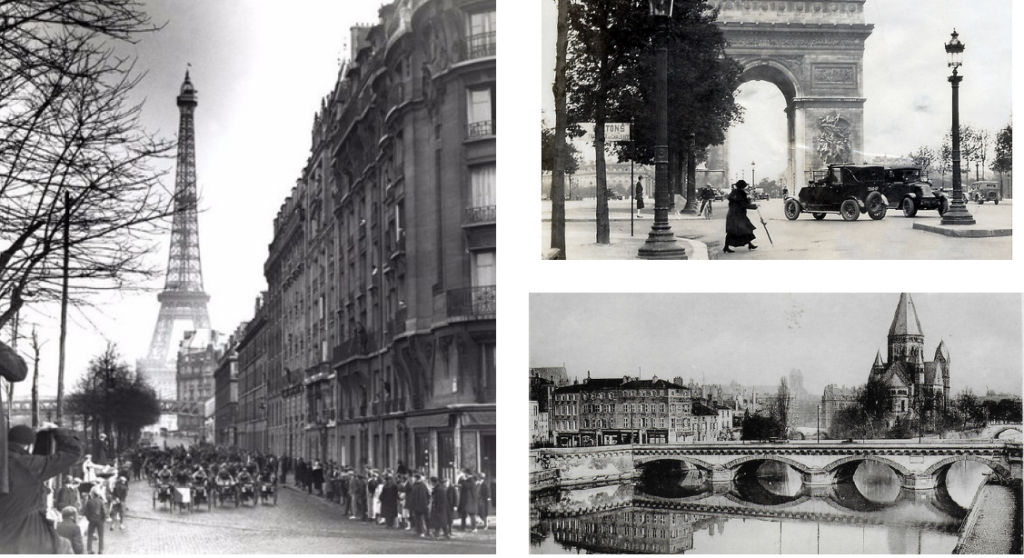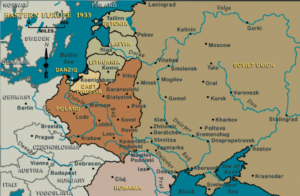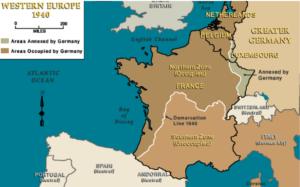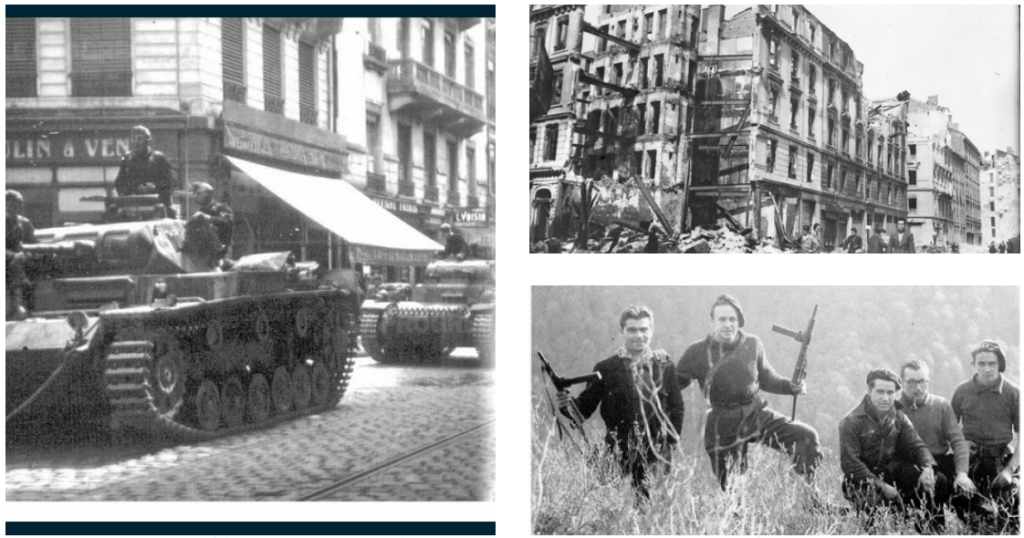Golda Thaia ROSENBERG (1901-1918)
Golda Chaia Herszbaum was born in Poland on May 18, 1901, in Bałuty (now Łódź). Her parents were Chaim Herszbaum and Charma Pulvermacher. Her husband, Zailik Rosenberg, was also born in Poland, in Grójec on January 12, 1898. He was a tailor. They had three daughters. The first one was born in Łódź on April 15, 1918. We don’t have information about where their wedding took place, but as their first daughter was born in Łódź, we can say they have kept a link with this city.
Bałuty and Łódź (until 1918)
At the beginning of the 20th century, Łódź had ca. 314,000 inhabitants and was a city with the most important part of Jews, in all Europe. It was a big, developing industrial center. Bałuty was incorporated in the city of Łódź in 1915, during the World War I. Before that it was big village with ca. 100,000 inhabitants. The most of the inhabitants of Bałuty were craftsmen or textile workers. In Bałuty the life conditions were hard, there were difficult sanitary conditions, people lived in overcrowded houses. Baluty quickly acquired a bad reputation as a district of poverty and crime.
For the citizens of Łódź the World War I was a very traumatic experience. In general on the territory of Poland under partition more than 3 millions of men were mobilized for three different armies – German, Russian and Austro-Hungarian. Indeed, at the beginning of the war, since 1795, it has been decades that the Poland was not free: the territory of what it will be later the Poland, was divided by the Empire of Russia, Germany and Austria-Hungary. Bloody battles took place between all this armies, and Poles were forced by the occupiers to fight even if it meant to kill another Poles. 220 000 soldiers from Austria-Hungary’s army were killed, 200 000 from the Russia’s army and 110 000 from Germany’s army. More than 90% of the territory of the First Republic of Poland was a big battlefield, and that caused lot of damage. One of the biggest battles of the war took place near Łódź. In 1918, Poland officially declared independence. At this point, Golda was just 17 years old.
Lodz (old views, around WWI)
Paris and Metz (1919-1939)
After the World War I and atrocities, Paris of the 1920s is seized with a furious need for liberation. For nearly ten years, the capital experienced a period of effervescence known as the “Roaring Twenties”. The Roaring Twenties led Parisians into a kind of cultural and social frenzy: the city was transformed by Art Deco constructions, automobiles invaded the streets, household appliances revolutionised daily life… Changes that will actively participate in the emancipation of women, who have already developed a taste for a certain independence, involuntarily experienced following the departure of men for the front. Under the impetus of Mademoiselle Coco Chanel, they also adopt a fashion representative of their state of mind: a “garçonne” cut, shorter skirts and clothing in general more comfortable, contrary to the corset still worn in the Belle Epoque.
Because of the very high death toll of the First World War, there was a low birth rate. To solve this problem, massive immigration was used. These immigrants came from Italy, Portugal and also from Eastern Europe, including Poland, as the Rosenberg couple did. Some northern cities were almost exclusively made up of Poles. Furthermore, through the pacification of European relations, industry in France was imposing itself on European markets and living standards were improving. We might think that it was in this context as well as in order to have a better life that the Rosenberg family arrived in Paris in 1919. A second daughter Rosa was born on 22nd September 1920 in Paris. On the birth certificate, it was written that the family was living 39 Rue La Roquette and that Rosa’s father was a tailor. The couple Rosenberg didn’t stay many years in Paris and moved to Metz. A second act of wedding between Golda and Zeilik Rosenberg was written at Metz on January 1924. It allowed them to ask for French naturalization.
Paris and Metz in 1920’s
Lyon under Nazi occupation (1939-1944)
In the 1930’s, the couple decided to move again and found a new house on 29 Rue St Eusebe in Lyon. We may imagine that it was for political reasons with the beginning of World War II in Europe and France. At this point, Golda was around 40 years old.
During the World War II, Lyon saw a mix of destinies. Situated in the Southern zone, in accordance with the 22nd June 1940 armistice, it became the most important city of Free France. It fulfilled a major role with the redeployment of administrative services and press organs from Paris. As an important intellectual hotbed, Lyon saw numerous leaflets and clandestine newspapers begin to appear from the summer of 1940. At the same time, the civil and military Resistance began to be organized.
On November 11th, 1942, the situation changed radically: German troops invaded the southern zone and the German occupation of the city began. The Nazi repressive services and the Vichy auxiliary police tracked down the members of the resistance and made many arrests. The repression also descended on the Jews, and many roundups were organized from August 1942.
On September 14th, 1944, during a speech at the City Hall, General de Gaulle paid tribute to the city’s commitment, and proclaimed Lyon the “Capital of the Resistance”.
Old views of Lyon under Nazi occupation / Resistance members
Arrest in Lyon and deportation from Drancy to KL Auschwitz-Birkenau (1944)
Léon Lerner, Golda Thaïa’s son in law, was a member of Gaullist resistance, which was a movement inspired by the general De Gaulle. They were against the armistice with Nazi Germany and the Vichy collaboration led by Phillippe Pétain. On June 22th, 1944, he had an appointment with one of the members of his resistance organisation. However, this member was arrested at the place of the exchange and then tortured for information such as the information about the Lerners’ home address. On the same day, the police arrested the 4 family members including Golda Thaia Rosenberg with her husband and Ida’s grandmother, and handed them over to the Gestapo. Leon Lerner succeeded to escape but died later on another mission.
Ida, her third daughter, was arrested in a second time. She quoted as witnesses of the arrestation Mrs Sanchez, born as Francine Merlin, 26th Rue du Nord in Villeurbanne and Mr Henri Platzman, 92 nd Montreuil street in Paris and as witnesses of the deportation Mrs Elly Majerowiz, 7th Rue Fournet in Lyon and Mrs Regine Jacubowiz, 53rd Rue des Quatre-Églises in Nancy.
The 31th June 1944, the archives said that Golda Thaia Rosenberg was deported to Drancy after a stay in the Fort Montluc which was a prison located in the city of Lyon. This one was built in the early 1830s with an entire system of wall in order to protect the city against the invasions. During World War II, more than 10 000 persons were brought to this one and some very famous figures of the French Resistance were imprisoned in it, like Jean Moulin or Marc Bloch. Among the prisoners, there was mostly communists and revolutionaries and from the beginning of 1943, the entire prison of the Fort was under the direct control of Klaus Barbie. All of these people were living in unhuman conditions. We may imagine the same ones for Golda and her family from Drancy transit camp, the archives mentioned an arrival at Auschwitz-Birkenau camp on August 3rd, 1944.
Fort Montluc at Lyon and Drancy camp
KL Auschwitz-Birkenau was the largest of the German Nazi concentration camps and extermination centers. When the Jews arrived at the camp, SS doctors did separate those who were fit for work (men and women) from those who will be taken directly to the gas chamber (women with children, children, elderly, disabled). We may imagine that Golda was separated from her family (husband, daughter, mother).
In her audition and ask for a deportee political title to her dead mother on September 24th, 1954, Ida, Golda’s third daughter, said that that her mother, father and grandmother were taken to the gas chamber in the evening and murdered there, and their bodies were burned in the crematorium. They didn’t come back from Auschtwitz-Birkenau camp. Ida managed to survive the hell of the Auschwitz camp. She returned to France at the age of 21 years old.
Ida died on September 26th, 1999 at Caluire-et-Cuire in the area Auvergne Rhône Alpes.
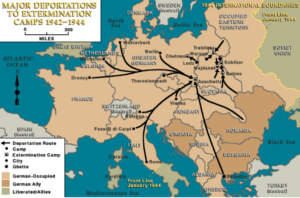


 Français
Français Polski
Polski